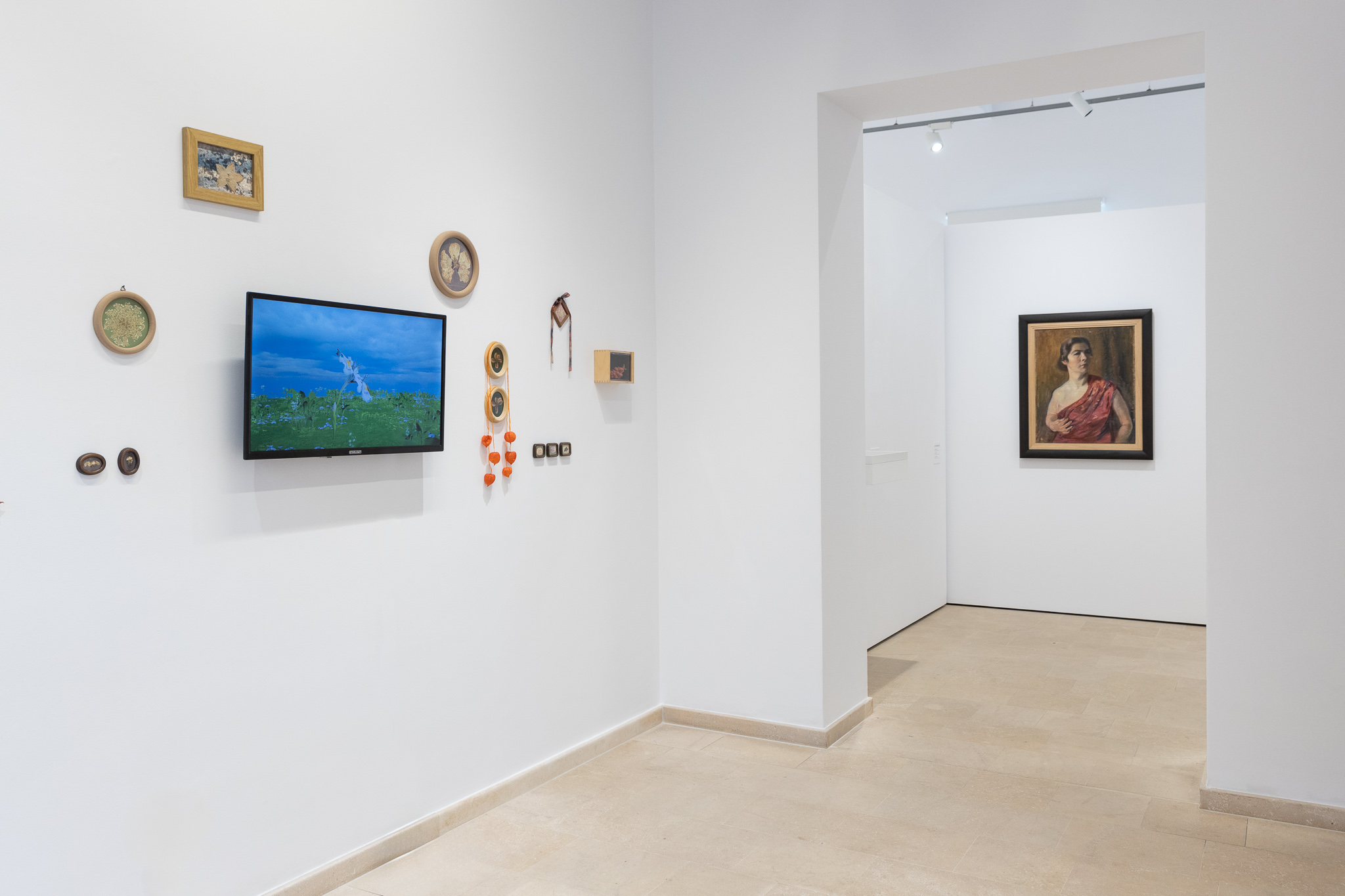Lanterns and Other Memories
Shown in My Treasure, Your Treasure, Their Treasure curated by Székely Sebestyén at Quadro Gallery, Cluj-Napoca, Romania, 2024
Shown in My Treasure, Your Treasure, Their Treasure curated by Székely Sebestyén at Quadro Gallery, Cluj-Napoca, Romania, 2024

The artist Dóczy Berde Amál had a memory notebook that she kept with great care. On its pages are stuck pieces cut from the material of the clothes worn by her or by those close to her at important points in her life. Beside them can be read short descriptions in which she recorded for posterity the occasion on which they were worn (her first ball, the trip to Paris, her wedding, etc.), the date of their purchase, or the name of the dressmaker who made the garment.
It is fascinating that rather than resorting to painting, her usual medium of artistic expression, the 51-year-old artist instead chose ready made visual and tactile materials to capture, in a time capsule, events from her long-distant childhood and youth. The life given immortality via these scraps of cloth strikes us as colourful, dynamic and vital.
The fact that this notebook is still in existence is due both to its author, who kept it for 39 years, and to Erzsébet Gergely, who in her turn has had it in safe keeping for 48 years. Our exhibition marks the first time it has been displayed in public.
It opens up to us an extraordinarily rich variety of early 20th century textile materials which we frequently know only from black-and-white photographs. The notebook is without doubt also a rich source for cultural history, yet this is not the aspect that attracted us the most. Leafing through the notebook while reflecting on the way it has survived inspired us to focus our attention on the making of collections as a means of saving.
We showed the notebook to, and discussed it with, women artists whose practice is distinguished by the fact that they are also collectors. These discussions helped us to refine more and more clearly a conception in which the making of collections means preserving, protecting, and looking after.
The works contributed by the women artists invited to exhibit have convinced us that this kind of preserving by collecting makes no claim to official recognition by any institution and does not ground its validity on any academic thesis. It is a softer structure than soft power and does not aspire to power. It is bold in its subjectivity and does not requuire large sums of money (or sometimes any financial resources at all), and, that being so, it is not concerned with the financial fortunes of the things collected either. On occasion it operates at the interface between private and public, objective and feelings-based. It is inclusive and reads objects outside the viewpoints of the disciplines. It can be compulsive, even to the point of absurdity, yet, again, purely from a desire to save, not to acquire.
It is fascinating that rather than resorting to painting, her usual medium of artistic expression, the 51-year-old artist instead chose ready made visual and tactile materials to capture, in a time capsule, events from her long-distant childhood and youth. The life given immortality via these scraps of cloth strikes us as colourful, dynamic and vital.
The fact that this notebook is still in existence is due both to its author, who kept it for 39 years, and to Erzsébet Gergely, who in her turn has had it in safe keeping for 48 years. Our exhibition marks the first time it has been displayed in public.
It opens up to us an extraordinarily rich variety of early 20th century textile materials which we frequently know only from black-and-white photographs. The notebook is without doubt also a rich source for cultural history, yet this is not the aspect that attracted us the most. Leafing through the notebook while reflecting on the way it has survived inspired us to focus our attention on the making of collections as a means of saving.
We showed the notebook to, and discussed it with, women artists whose practice is distinguished by the fact that they are also collectors. These discussions helped us to refine more and more clearly a conception in which the making of collections means preserving, protecting, and looking after.
The works contributed by the women artists invited to exhibit have convinced us that this kind of preserving by collecting makes no claim to official recognition by any institution and does not ground its validity on any academic thesis. It is a softer structure than soft power and does not aspire to power. It is bold in its subjectivity and does not requuire large sums of money (or sometimes any financial resources at all), and, that being so, it is not concerned with the financial fortunes of the things collected either. On occasion it operates at the interface between private and public, objective and feelings-based. It is inclusive and reads objects outside the viewpoints of the disciplines. It can be compulsive, even to the point of absurdity, yet, again, purely from a desire to save, not to acquire.

Thea Lazăr is attracted by the botanical realm and studies the way in which plant collecting expresses people’s relationship with the world. In the installation shown here, the positivist identification and systematising of flora in botanical display cases is thrown into confusion and the making of collections of dried plants emerges as a means of expression that is subjective and even romantic.






Photo credit: Roland Váczi